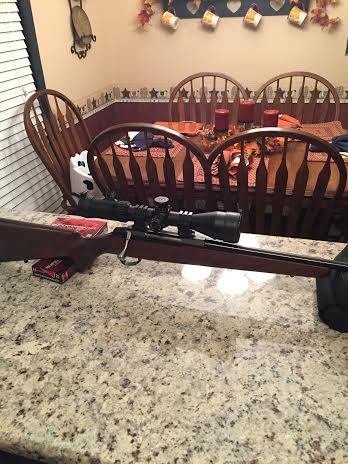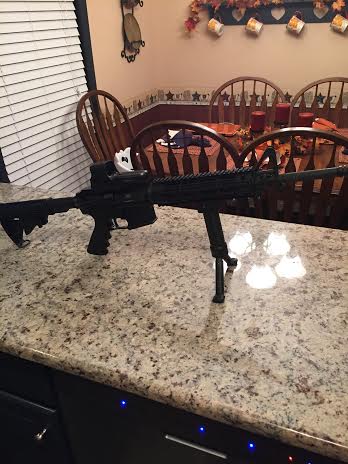Rifles and their advocates are in the news and blogs these days. It doesn’t take a handgun to perform home defense. A man using a rifle recently detained three burglars until police arrived. It could have been any type of rifle.
Rifle Shooter Magazine recently did a piece on the best bolt action rifles of all time. Brad Fitzpatrick covers a number of the ones you would expect to see, including the Remington 700, Winchester model 70, Weatherby and so on. But he includes one interesting and noteworthy rifle.
There may be some who shake their heads at the addition of the Tikka to this list, but it’s impossible to ignore the rifle’s impact of recent bolt action trends. The Tikka has a two-piece bolt with a Sako-style extractor and plunger-type ejector, and it utilizes a one-piece machined action with a reduced ejection port for added stiffness and, in theory, better accuracy. The Tikka also has a lot of plastic parts, most notably the magazine, which causes some grumbling from purists, and it has a light, crisp, adjustable trigger. When Beretta began importing Tikka rifles it became apparent that the design was capable of producing excellent accuracy in a budget rifle. Since that time, there have been many budget rifles that adopted the Tikka’s use of reduced-weight (and cost) plastics, a good trigger and the reduced ejection port. The Tikka started changing what shooters expected from budget-priced rifles, and in doing so it has become one of the most important bolt action designs in recent memory.
I agree. I bought a Tikka T3 .270 and couldn’t be happier with it. I bought it after becoming furious with the Remington 700 trigger problems (to which they all but refused to admit), and then Winchester for fabricating their parts in Columbia, S.C., at the FN plant who bought them out, and then shipping them to Portugal for assembly, creating a situation where no one knew when my rifle was going to come in. Literally, there was no estimate of time because the distributor knew nothing whatsoever about availability versus every other rifle (which he knew something about). My Tikka is a worthy competitor to any of the mid-range priced bolt action rifles.

Next is Lucky Gunner discussing Scout Rifles (via Uncle). The most informative comment on this comes from Uncle’s post.
Cooper was very, very clear as to what a Scout rifle is and what it isn’t, and he wrote about this right up to 2004. Since he made up the term, the term is his and should be respected as such. Most of what’s talked about as a “Scout rifle”, he would call a “pseudo scout”.
For African hunting, he had what he called a “Dragoon” or a “Dragoon Scout” which was a Styer Scout in a heavier caliber. He described the Dragoon as the rifle that the Professional Hunters would see for the first time and say “What the hell is that?!” and after seeing it use throughout one safari, would ask, “Where do I get one?”
It is true that the “Scout scope” probably should have provisions for a sun shade at both ends, but then all of my deer have been taken either just after sunset, or in mid morning when the sun is high.
Also; Cooper was very clear on the point that a Scout rifle need not have a telescope on it at all, necessarily, to qualify as a Scout rifle.
So, although we sell several optic mounts as “scout scope mounts” we mean a mount that facilitates the attachment of a scout scope, as opposed to a scope mount for a Scout rifle. There is a distinction.
Now that Springfield sells an M1A “Scout” model (and Cooper commented on this rifle favorably, though he did not consider it a true Scout rifle) things have become somewhat confused.
Almost without exception, people I’ve talked with who consider themselves shooters, have balked at the idea of shooting well past 100 yards without magnification. This is proof positive that they’ve never tried it, at least not with a serious attitude. I usually use the example of High Power competitions, which start at 200 yards, standing, unsupported, with no magnification. The prone position is reserved for the 1,000 yard line, still with no magnification.
There is a world of difference between carrying everything you need on your person, on foot, ready to shoot within three or four seconds of identifying a target, and shooting at fixed targets at measured distances from a bench at your local 100 or 200 yard range with a buffet table of tools, ammo and accessories. The latter is for the purpose of load development and fisking out the performance of your equipment. The other is the real world which said fisking, along with much field practice using improvised positions on targets of opportunity at non-standard, unmeasured distances, was done to facilitate.
Sorry to steal your thunder Uncle. The comment was too informative to pass up. But perhaps the most interesting post comes from Bob Owens who is discussing the do-anything rifle.
Earlier today on Twitter I laid out my thoughts on what my “ideal” rifle would be (those of you who aren’t yet following me on Twitter can do so here), since I’ve been unable to find the “one gun” that would do everything that I would like a rifle to be able to accomplish (nor have I been able to find a unicorn).
In general theory, this rifle would be adequate as a hunting rifle for North American big game animals (deer, elk, bear, moose). It would also be useful as a self-defense/militia firearm, capable of running well in battle-rifle courses of fire.
These are the qualities I desire in this “do anything” rifle:
- A semi-automatic, magazine fed rifle.
- The “standard” magazine would be ruggedized and nearly “bombproof,” made of steel, and would have a 20-round capacity. 20-round magazines tend to work better in the prone position. Magazines of 5 and 10 rounds could be used for hunting and target shooting.
- The cartridge I want doesn’t yet exist. I desire a caseless 6.5-7mm cartridge firing bullets of 110-140 grains. I’d want sub-MOA performance, a practical barrel life of 10,000 rounds, and 1,200 meter range. Theoretically, the lack of a case would mean you could carry more rounds with less weight as opposed to brass-encased ammunition.Why caseless? No brass to litter the ground (or give away your firing position), no ejection port to allow in outside muck and mud, and no ejection cycle means no ejection-related malfunctions (a more reliable firearm).
- The rifle would feature an integral brake to reduce recoil to .223 Remington/5.56 NATO levels, and would port gases in such a way as to prevent creating a dust cloud that would give away the shooter’s position.
- The rifle would feature an integral 1x-6x variable power scope with an illuminated bullet-drop compensating reticle with range-finder.
- The rifle would be in a bullpup configuration to minimize overall length, while providing an optimal barrel length to maximize bullet velocity and reduce flash.
Bob later mentions the “short-comings of the 5.56 NATO.” This is a recurring theme with Bob, who is no fan of the 5.56 mm NATO round. The 5.56 has a number of detractors, but it’s important to remember that between the wars in Vietnam, Iraq and Afghanistan, this round has killed hundreds of thousands of enemy fighters.

The 5.56 was deployed for a number of reasons, but the primary conceptual reasons for the assault rifle are as follows: (a) capable of selective fire, (b) fires and intermediate cartridge, and (c) has mild recoil. The mild recoil allows rapid reacquisition of sight picture compared to heavy recoil cartridges. In addition to the mild recoil, the corollary of this for the intermediate cartridge is that more ammunition can be carried by the infantryman.
This specific NATO round tends to yaw in flight, creating the tendency to fragment upon impact causing multiple wound tracks. It is especially effective in close quarter battle, but it’s misleading to say that it is ineffective at longer ranges. At Al Najaf Travis Haley was killing insurgents out to 600 meters.
Oh there are detractors, indeed. TTAG has a lot of 5.56 mm hate going on in this post from someone alleging to have been in Fallujah using the M4 against insurgents. Despite this evidence, my own son Daniel had a high degree of success with the same round, and in Fallujah fighting insurgents who were hopped up on epinephrine and morphine.
Furthermore, I’ll give you two more scholarly studies on the 5.56 mm lethality, one from The Bang Switch and the other from NATO Army Armaments Group, the later focusing on the ability of the 5.56 to penetrate plates and armor compared to the .308. The truth of the matter is that the 5.56 mm is a fine round for CQB and medium range warfare, while longer range warfare is conducted better with a larger caliber like the .308 and a Designated Marksman (Daniel was also a DM and trained with the Scout Snipers, and still finds the 5.56 to be fine for its intended purpose). It’s okay to prefer something else and favor a larger caliber if that’s what you want. It’s not okay to be ignorant and call the 5.56 mm a poodle killer intended for women and children to shoot (as alleged at TTAG in the comments).
With all of that said, there are reasons to have a semi-automatic rifle chambered in .308 / 7.72 mm, even if I cannot find an AR chambered in my favorite large caliber, the .270 Win. There are reasons for each of the rifles and calibers, and the main point is that I reject the premise that a single rifle can accomplish it all. The better option is to select the best rifle type and caliber to accomplish the desired mission, whether it is performance and competition shooting, hunting game or hunting men.
Finally, you are aware of standard rifle break-in procedures, aren’t you? I have followed a procedure closely approximating this one. I can’t honestly say that I’ve noticed a huge difference after the procedure, probably meaning that I need to get better and more consistent with my shot groups.
There is no such thing as the perfect rifle. There are rifles very nearly perfect for specific applications, which means that you need to have multiple rifles. The best rifle is the one you have in your hands and with which you have trained. But there are things that you don’t do even with the best rifles, like try to stick it in your pants.





